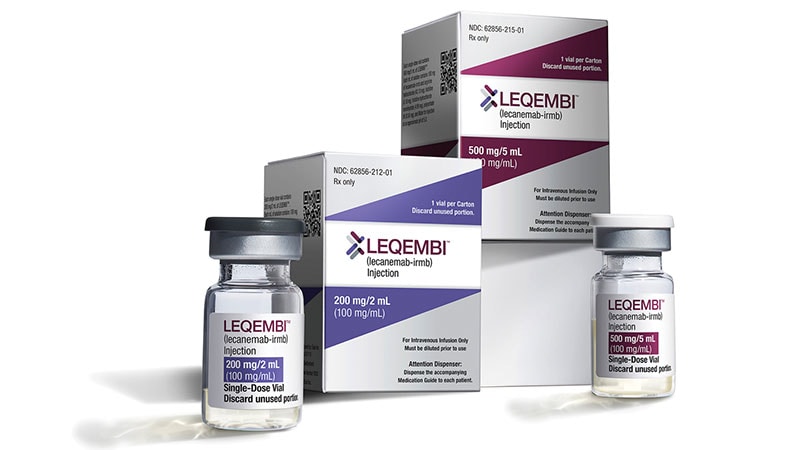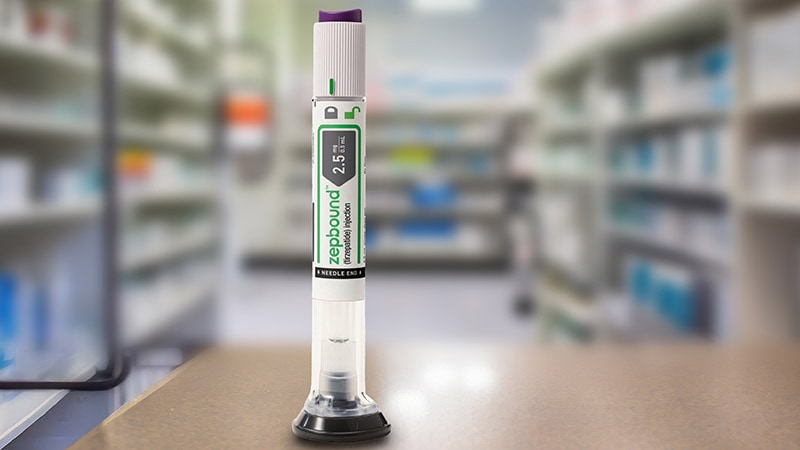Please note that the text below is not a full transcript and has not been copyedited. For more insight and commentary on these stories, subscribe to the This Week in Cardiology podcast, download the Medscape app or subscribe on Apple Podcasts, Spotify, or your preferred podcast provider. This podcast is intended for healthcare professionals only.
In This Week’s Podcast
For the week ending April 26, 2024, John Mandrola, MD, comments on the following news and features stories: A listener defends colored boxes in guidelines; mysteries of non-culprit coronary lesions during percutaneous coronary intervention (PCI) for myocardial infarction (MI); mysteries of atrial fibrillation (AF) ablation; and surrogate markers.
Listener Feedback
I received feedback this week on comments I made during the March 29 podcast regarding guidelines. I opined, as I often do, on the complexity of medical practice, and the folly of guideline writers trying to simplify things with colored boxes of grade 1, 2 or 3 recommendations. I believe it is silly to try to make algorithms for patient care. Because so few patients easily fit into these boxes.
My take has always been to do the guideline documents, write the narrative reviews with references, and leave the boxes out.
However, a physician-friend who has amazing training at a big center but practices in a remote area of the world wrote to me in disagreement.
He made the case that algorithms and computers may be better than poorly informed doctors. He sent me crazy examples of bad care that he has witnessed. These, he wrote, are errors due to poor training, lack of knowledge, and lack of curiosity.
But then he shocked me because such poor care is not limited to rural areas. He noted that it can be seen in academics. Countries I had previously thought had excellent care, he wrote, can be horribly influenced by poor knowledge and financial conflicts of interest. To paraphrase his comments:
Fraud studies with manipulated data, doctors implanting cardioverter-defibrillators (ICDs) or doing ablations without indication just to get financial support from the companies, stents implanted in stable coronary artery disease (CAD), healthy patients get Holter monitors and echo just to fill the pockets of cardiologists. I saw a lack of interest and knowledge wherever I look--black and white thinking (coronary heart disease needs beta blockers, if bradycardia then, needs pacemaker and so on). And that’s why, he wrote, I think that flow charts in the guidelines are very good… as normal doctors (>90% in my opinion) who don’t read books and papers, and at best they check the respective section in the guidelines. So, I am convinced that data filled computers could better advise patients than normal physicians.And this, which is quite pessimistic,
Basic medical knowledge is often not applied, I would even say common sense is not applied so often. Papers aren’t read much (and understood even less), neither by junior nor senior doctors. So it cannot be expected that subtle scientific nuances are considered in clinical practice. In my opinion human beings including doctors are worse than computers. It’s very sad. Yes.My friends, I don’t know what to say about this. I’ve presented to guideline writers, and they expressed similar thoughts — albeit in less stark terms — namely, that many if not most doctors don’t have (or take) the time to understand the nuances of evidence. They rely on these boxes.
I guess that is the role of this podcast: I hope to provide listeners some nuance beyond the colored boxes of guidelines. And I hope that my colleague’s experience is not representative of most of our profession.
I will hold a more optimistic view of this wonderful job.
A Mystery: What to Do in the Cath Lab After Fixing the Culprit Lesion. The FULL REVASC Trial
Interventional cardiology often confuses me. Antiplatelet regimens after PCI have oodles of studies but I have yet to grasp the ideal recipe.
Choices of revascularization during an acute PCI is a close second. What I mean is that when patients have an acutely occluded coronary vessel, emergent PCI is one of the purest therapies in all of medicine. But. What if there are other stenoses there in addition to the culprit lesion? Should those be stented or treated only with medical therapy? Stable CAD is stable, right?
In 2019, the COMPLETE trial randomly assigned patients with ST-elevation MI (STEMI) who had multi-vessel CAD to receive culprit-only PCI or complete revascularization. Follow-up was about 3 years. There were a whopping 2000 patients per treatment arm.
Complete revascularization was the clear winner. Both co-primary composite major adverse cardiac event (MACE) endpoints clearly favored complete revascularization.
For instance, cardiovascular (CV) death or MI, occurred in 7.8% vs 10.5% complete vs culprit-only, respectively. That’s a nearly 3% absolute risk reduction (ARR) and a hazard ratio (HR) of 0.74.
And it did not matter whether the non-culprit (extra) lesions were done during the hospitalization or later. Nearly all the non-culprit lesions qualified based on visual estimation of stenosis (> 70%).
That to me sounds like a statistically robust and clinically important finding. In two words: fix everything. In addition, there was also the positive FIRE trial, which enrolled older patients with MI and found a 36% lower rate of a composite endpoint of CV death and MI with physiology-based complete revascularization vs culprit-only.
Well, the FULL-REVASC trialists said that visual estimation is not ideal. And that’s hard to argue with. They posited that hemodynamic assessment of the non-culprit lesions would better identify the lesions most worthy of PCI and at the same time minimize stent burden.
They used fractional flow reserve (FFR), a wire-based way of evaluating the hemodynamics of the flow limitation. They cited the FAME 1 and 2 trials, which I have previously criticized as not obviously showing any clear benefit. But that’s another story. For the sake of argument, we will assume that FFR does indeed help assess the importance of a stenosis.
The objective of the FULL REVASC trial, therefore, was to assess whether FFR-guided complete revascularization during the index hospitalization results in better cardiovascular outcomes than an initially conservative approach of culprit-lesion-only PCI in patients undergoing primary PCI for STEMI.
The results were somewhat surprising. There was no significant difference in the composite MACE primary endpoint of death, MI, or unplanned revascularization with FFR-guided complete revascularization vs culprit only.
Unlike the 4000 patients in COMPLETE, FULL REVASC included 1500 patients but followed them for nearly 5 years.
The primary outcome occurred in 19% vs 20.4%, complete vs culprit-only. That’s a HR of 0.93 with 95% confidence interval (CI) ranging from 0.74-1.17. There was also no significant difference in the secondary endpoint of CV death or MI; HR 1.12 (CI 0.87-1.44).
There were more stent-related issues in the complete arm.
Stent thrombosis: 19 vs 7, complete vs culprit, HR 2.8, CI 1.1 - 6.7.
Restenosis: 32 vs 18.
There were no differences in safety outcomes.
One interesting nugget from FULL REVASC is that FFR reduced the number of stents — like the original FAME trial. Only half of nonculprit vessels in the complete revascularization arm who had an FFR measured had a significant FFR of less than 0.80.
Despite the theoretical advantage of reducing stents with FFR, the complete arm obviously had more stents than did the culprit-only arm, and hence more stent-related events. And still on benefit in outcomes of complete vs culprit only.
Comments. You see why I am confused. If the operator just does old-school visual assessment of the degree of stenosis, and uses that to completely revascularize the heart, it’s better than culprit only. Clearly better. The COMPLETE and FIRE trials were much better with doing all the lesions.
But if the operator uses FFR in an attempt to pinpoint the most important stenoses to stent, it’s no better than culprit-only. Really?
Well, the authors and Dr David Cohen on Twitter write that FFR in the setting of an acute MI may not deliver the same actionable results as it does during chronic CAD cases.
Maybe.
Fortunately, an ongoing trial (COMPLETE-2) is evaluating physiology-guided as compared with angiography-guided complete revascularization of nonculprit lesions among patients with acute MI and multivessel disease.
Going into that trial, though, the results of FULL REVASC surely lead to having pessimistic prior beliefs. So, you are going to have to see a strong signal of physiology-guided complete revascularization to overcome these pessimistic priors.
In the end, I am beginning to wonder whether the question of what to do in the cath lab after you’ve stopped the heart attack, is a lot like choosing the best AF treatment strategy. That is, clinician judgement may play a bigger role than evidence. Gulp. I can’t believe I just said that!
AF Ablation Mysteries
The great societies of electrophysiology (EP) — the European Heart Rhythm Association, Heart Rhythm Society, Asia-Pacific Heart Rhythm Society, and Latin American Heart Rhythm Society have published a new expert consensus statement on AF ablation. It’s 107 pages with many hundreds of references. All the big names are on it. As with all these documents, the review is excellent. If you read it, you will learn the state of the art of AF and AF ablation.
But today I would like to show you a small, modest study from Bern, Switzerland, that exposes that lack of correlation between a 107-page expert document and actual knowledge.
Before the study, let’s make some points.
In general, in most patients with symptomatic, drug and time refractory AF, ablation seems to work to reduce AF. But success is modest. This is no WPW ablation.
Patients with AF often ask me: “How do you know where to ablate?” My answer is that I don’t. No one does. Then I go on to explain that the pulmonary vein (PV) musculature seems important. We have learned that electrically isolating these area leads to the reduction in AF episodes in some or most cases.
But come on friends, don’t you think that at least some of the reason we ablate the PVs, is that we can? We can put a catheter in there, ablate around it, and voila, the PV signals are gone. It’s neat. Everyone cheers when the vein signals go away.
It’s sort of soft thinking, though, because a neutral Martian might ask, hey professor, what about the vast majority of the rest of the atrium? Including the right atrium (RA)?
The Journal of the American College of Cardiology (JACC) EP published this study from the Bern University group in Switzerland; first author Oskar Galuszka. It’s a small study but it’s interesting.
This group did AF ablation using a CLOSE protocol. Basically, a way to get point-to-point radiofrequency (RF) applications close together and have good lesion characteristics, using contact force at the point of the burn. It’s simply another way to get good quality PV isolation.
They then took 26 patients back to the EP lab at 6 months, regardless of whether they had AF.
These are always important studies because in practice, we would never take a patient back to the lab if they were free of AF, because a transseptal puncture has risk.
But from a research point of view, you learn a lot doing re-do procedures. There have been about seven of these studies of mandated redo left atrial mapping, which they have listed in a table in their paper.
The Bern group found that 58% of patients had all four PVs isolated and 42% did not. That’s sobering because they are experienced operators doing a study in which they know a patient will come back. So, they are trying hard to get PV isolation.
Considering PVs, they found that one in four PVs had reconnected.
6 of 26 patients or 23% had recurrent AF.
Recurrence had occurred in 33% of patients with complete isolation of all veins and in 9% of patients with PV reconnections. PV reconnection looked protective!
After re-PV isolation in patients with PV reconnections and additional ablation in patients with recurrence but durable PV isolation, 17 of 26 patients (65%) were free of arrhythmia after 12 months.
Comments. Before I opine, let’s set out that these are small numbers. 6 recurrences in only 26 patients. But still, I find it humbling.
First, in 2024, using a careful RF ablation in experienced hands in Bern, more than 40% of patients had reconnected PVs at 6 months.
Then, AF recurrence is 33% in those with total PVI (the goal) and only 9% in those with reconnected PVs (what we try to avoid).
Then, even after re-isolation in the second procedure, 35% patients still have AF.
My friends, we’ve been ablating AF for 24 years. And this is where we are? It’s darn humbling. The Bern experience is representative. I often see patients with recurrent AF after a PVI and at repeat ablation the veins are isolated. AF, therefore, is coming from a different geography.
Here, in the Bern study, and in other studies of mandated repeat procedures, we see people with re-connected veins who have no AF. That too means that ablation must have hit something other than a vein source. (Or, gulp, AF simply went away because lots of early AF goes away.) See Soren Diedriechsen “Natural History of SCAF detected by ILR.”
A group in Liverpool, United Kingdom, also published a similar mandated study last week.
44 patients with significant LA disease by electro-grams, were randomly assigned to either RF or cryoballoon (CB) ablation.
The protocol mandated repeat re-do procedure at 2 months, regardless of symptoms. 38 of 44 patients had repeat procedure.
PV reconnection was observed in 48% of all PVs. Again. They found reconnection of at least one vein in >75% of patients.
This is in the Liverpool Heart and Chest Hospital, another highly experienced center. CB had slightly more reconnections than RF, but that’s not the key finding.
The key finding is similar to the Bern Study. We don’t really understand AF or AF ablation.
This is why I am not super-enthusiastic about the big, pulsed field ablation (PFA) news. Yes, PFA may be some faster. It may not harm the esophagus, but it’s three times the cost, and all it does is destroy LA.
PFA will be great for industry. They will sell more expensive stuff. It will allow for faster ablation, perhaps by less skilled operators because it might be easier, emphasis on might be easier. Doctors will benefit financially too doing more AF ablation and faster AF ablation.
But I don’t see how a new way to isolate PVs or parts of the atria, is a way to advance the field of AF.
To me, again, big answers in AF will likely come from basic labs and strong thinking, not from EP labs where we use obliteration of electrograms from myocytes as a surrogate marker to make us happy.
Let me know what you think. Am I too pessimistic?
Surrogate Markers
Speaking of surrogate markers.
JAMA has published a somewhat technical but important paper on surrogate markers in clinical trials. Surrogate markers are something that can be measured (say LDL or BNP) and is associated with an important outcome. It’s easier to measure these things than, say, total number of deaths, or MIs, or heart failure (HF) events.
Surrogate markers should be plausibly on the causal path to the outcome of interest, but that is not enough, observational studies have to associate it with the outcome, and of course, trials should also confirm that if you improve a surrogate you improve the outcome.
The biggest ever fail of a surrogate was premature ventricular contractions (PVCs) after MI. Yes, the story of CAST again. We knew PVCs after an MI, especially in patients with left ventricular (LV) dysfunction, were associated with a higher rate of death. And we had drugs that suppressed this surrogate — so called antiarrhythmic drugs (AADs). But, as you all know, AADs did suppress PVCs but instead of reducing death, patients who took the AADs and enjoyed surrogate marker suppression, died at a much higher rate.
The authors of the most recent paper, first author Joshua Wallach, were interested in studying a table of 100 surrogate markers that the US Food and Drug Administration (FDA) greenlighted for use as primary endpoints in regulatory trials.
Now, we know that our oncology friends have previously shown that a thing called progression free survival (that is, the stability of a tumor on a scan) does not correlate well with overall survival. It’s less well known how these other surrogate markers perform as reliable indicators of clinical outcomes.
So, in a massive undertaking, the supplement is hundreds of pages, these authors reviewed meta-analyses of clinical trials of 37 surrogate markers of non-cancer diseases. They excluded pediatric diseases and a slew of genetic, vaccine, and other cancer diseases.
The primary sample was of 37 surrogate markers for 32 unique chronic diseases. Their main outcome measure was a correlation between the surrogate and clinical outcomes in the meta-analyses of trials. Not observational studies.
Finding number 1: For the majority of surrogate markers that could be used as a primary endpoint in a regulatory trial, (59%) of 32 chronic diseases, there were no eligible meta-analyses. Translation: No data.
Finding number 2: For 15 surrogates, (41%) of 14 diseases, at least one meta-analysis was found. This included 54 meta-analyses in total. These 54 studies reported on 109 unique surrogate marker/clinical outcome pairs.
Cardiac-adjacent surrogate-outcome pairs included hypercholesterolemia, hypertension (HTN), type 2 diabetes, hypertriglyceridemia.
Some notes on these 54 meta-analyses:
26% were industry-funded.
Only 17% reported a high strength correlation.
The remaining 50 pairs reported only slopes, effect estimates, results from meta-regression analyses, or another metric of association or prediction, 26 (52%) of which reported at least 1 statistically significant result.
Figure 3 sums it up. Most often there is no evidence for correlation between surrogacy and outcomes. Weak and limited evidence occurred in more than half the surrogate-outcome pairs, and strong evidence was present in less than 5%.
Some cardiac specific surrogates:
High Cholesterol. Eleven meta-analyses reported inconsistent evidence on the strength of association between reduction in LDL cholesterol and various clinical outcomes. Although all meta-analyses claimed that reductions LDL were associated with statistically significant improvements in at least one clinical outcome, only one meta-analysis reported high-strength coefficients of determination between LDL cholesterol and major vascular events.
This is important as FDA approves and we accept new drugs based solely on reduction of LDL. Recall that statins are the most studied drugs of all time, and we know, as near as scientific fact gets, that the drugs reduce LDL and CV outcomes. This correlation is not as well known for other drugs; think CETP inhibitors.
Hypertension. Ten meta-analyses offered inconsistent evidence on the strength of association between reductions in systolic or diastolic blood pressure (BP) and improvements in CV outcomes and all-cause mortality.
But here, at least, the most recent meta-analysis reported that reductions of 5 mmHg in systolic BP were associated with decreased incidence of MACE.
Some other dubious markers included HbA1c, bone mineral density, and even FEV1 for chronic obstructive pulmonary disease, which had poor correlations with clinical outcomes.
Comments. The authors point out that there is no consensus on the minimum strength of association between the treatment effects measured by surrogates vs that measured by clinical outcomes. They measured correlation coefficients, but even these are limited by being purely statistical, and they rely on arbitrary cutoffs.
I want to remind that even seemingly strong surrogates — say, nonfatal MI — can be dubious. Recall the 2019 David Brown paper in JAMA-Internal Medicine, where his team studied how well nonfatal MI acts as an outcome measure for all-cause or CV death in CAD trials.
They did a similar study, looking at trial-level correlations between nonfatal MI and all-cause and CV death. They set out that a correlation greater than 0.8 would be ideal if MI should be a good predictor.
They looked at 144 trials including more than one million patients. And boom, nonfatal MI did not meet the threshold for surrogacy for either all-cause or CV death.
Correlation coefficients were extremely low. And when they separated old vs newer trials, the correlation worsened. Which makes sense because increasingly sensitive troponin assays make MI an easier diagnosis to make.
Here's the summary point for us users of evidence: We always should be mindful of the primary endpoint. In days of old, guideline directed medical therapy of HF, for instance, was established by measuring death. Alive or dead. No bias. No need for correlation. Now we measure things like BNP, or HF hospitalizations. That’s a lot different.
Even BP. A relatively important surrogate. Renal denervation is approved. It’s set to become very popular. But it only reduces the surrogate measure of BP by a minimal amount over 6 months. This is miles and miles and miles away from improving outcomes like death or stroke.
We can argue about regulatory thresholds, but we can all agree that this most recent paper surely shows a lack of strong evidence b/w what FDA allows on the market and confidence that a treatment really works.
Take a look at the JAMA paper by Wallach and colleagues. It’s sobering.

.webp) 2 weeks ago
7
2 weeks ago
7



























 English (US)
English (US)